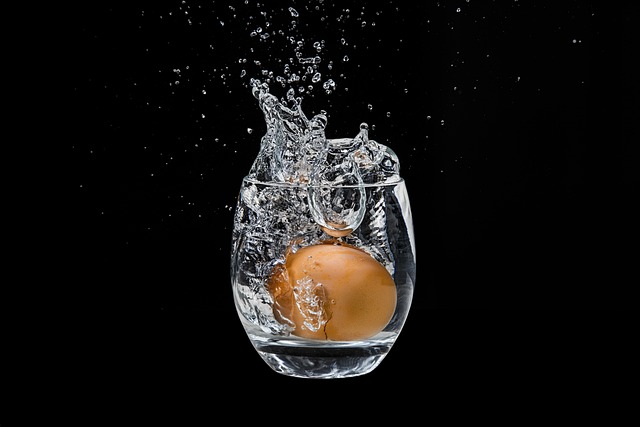The Ultimate Guide to Water Glass Eggs: Preservation Techniques, Safety, and FAQs
Introduction
What are Water Glass Eggs?
Water glass eggs, also known as sodium silicate eggs, are eggs preserved in a solution of sodium silicate.
This method, dating back to the 19th century, became popular among homesteaders and farmers who sought ways to store eggs for long periods without refrigeration. With the resurgence of homesteading and sustainable living practices, water glassing eggs is regaining popularity as a reliable preservation technique.
The Benefits of Water Glassing Eggs
Water glassing offers numerous benefits, including extending the shelf life of eggs up to a year or more. This method retains the nutritional value of the eggs, ensuring that they remain a good source of protein, vitamins, and minerals. Additionally, water glassing is cost-effective, reducing the need for frequent trips to the store and helping to prevent food waste.
Understanding Water Glassing
The Science Behind Water Glassing Eggs
Water glass, or sodium silicate, is a compound made from sodium carbonate and silicon dioxide. When eggs are submerged in a water glass solution, the sodium silicate forms a seal around the eggshell, preventing air and bacteria from entering. This preservation process keeps the eggs fresh and safe to eat for extended periods.
Historical Use of Water Glassing
Historically, water glassing was one of several methods used to preserve eggs before the advent of refrigeration. Farmers and homesteaders also used techniques like pickling and storing in lime water. Over time, water glassing became favored for its simplicity and effectiveness. While it fell out of common use in the 20th century, it has seen a revival with the growing interest in traditional preservation methods.
How to Water Glass Eggs
Choosing the Right Eggs
To ensure the best results, select fresh, clean, and unwashed eggs. Unwashed eggs retain their natural bloom, a protective coating that helps keep out bacteria. Eggs should be collected from healthy hens, ideally within 24 hours of being laid.
Preparing Your Materials
You will need the following materials:
- Food-grade sodium silicate (water glass)
- Clean, non-metallic container with a lid
- Fresh, unwashed eggs
- Water
Safety Precautions: Wear gloves when handling sodium silicate, and ensure your work area is well-ventilated.
Step-by-Step Water Glassing Process
- Prepare the Solution: Mix one part sodium silicate with ten parts water. Ensure the water is cool or at room temperature.
- Clean the Container: Use a clean, non-metallic container to prevent any reaction with the sodium silicate.
- Add the Eggs: Gently place the eggs into the container, ensuring they are fully submerged in the solution.
- Seal the Container: Cover the container with a lid to keep out dust and contaminants.
- Store: Keep the container in a cool, dark place, such as a basement or pantry.
Common Mistakes to Avoid
- Using Washed Eggs: Washing removes the protective bloom, making the eggs more susceptible to bacteria.
- Improper Ratios: Incorrect proportions of sodium silicate and water can compromise the preservation process.
- Poor Storage Conditions: Exposure to heat and light can degrade the solution and the eggs.
Recipes Using Water Glass Eggs

Classic Breakfast Dishes
Water glass eggs can be used just like fresh eggs in many breakfast dishes. Omelets, scrambles, and poached eggs turn out perfectly, maintaining their texture and flavor.
Baking with Water Glass Eggs
Baking enthusiasts will find water glass eggs ideal for cakes, cookies, and bread. They can be used directly in recipes without any special adjustments. The preservation method ensures that the eggs’ quality remains high, contributing to the desired consistency in baked goods.
Unique Recipes and Innovations
Explore international cuisines that feature preserved eggs. For instance, Chinese cuisine uses preserved eggs in dishes like century eggs and salted egg yolk custard buns. Get creative and try incorporating water glass eggs into various culinary traditions to expand your cooking repertoire.
Safety and Storage
Safety Considerations
To ensure the eggs are safe to eat, regularly check for any signs of spoilage such as unpleasant odors or discolored shells. If an egg floats in water, it may indicate that it is no longer fresh.
Storing Water Glass Eggs
Ideal storage conditions include a cool, dark place with stable temperatures. The eggs can last up to a year or more when stored correctly. Regularly monitor the eggs and solution for any changes that might indicate spoilage.
Frequently Asked Questions (FAQs)
What is Water Glassing Eggs?
Water glassing is a traditional preservation method where eggs are submerged in a solution of sodium silicate to extend their shelf life.
Are Water Glass Eggs Safe to Eat?
Yes, water glass eggs are safe to eat if the preservation process is done correctly. Always inspect the eggs for signs of spoilage before use.
How Long Do Water Glass Eggs Last?
Water glass eggs can last for up to a year or more, depending on the storage conditions and the initial quality of the eggs.
How Do You Water Glass Eggs?
Water glass eggs are made by mixing sodium silicate with water, submerging the eggs in the solution, and storing them in a cool, dark place.
Can You Water Glass Eggs in Plastic Containers?
While glass or ceramic containers are preferred, food-grade plastic containers can also be used. Ensure the container is clean and non-reactive.
What Are the Best Conditions for Water Glassing Eggs?
The best conditions include a cool, dark place with stable temperatures. Avoid areas that are exposed to sunlight or temperature fluctuations.
Can You Use Store-Bought Eggs for Water Glassing?
It’s best to use farm-fresh, unwashed eggs as store-bought eggs are often washed and may not have the protective bloom intact.
Conclusion
The Future of Egg Preservation
As interest in sustainable living grows, so does the appreciation for traditional preservation techniques like water glassing. Innovations in food preservation continue to emerge, but methods like water glassing remain valuable for their simplicity and effectiveness.
Getting Started with Water Glassing
For those new to water glassing, the process is straightforward and rewarding. Numerous resources and communities are available to provide guidance and support, making it easier than ever to get started with this timeless technique.
Additional Resources
Books and Guides
- “Preserving Eggs: Techniques and Recipes” by various authors.
- “The Homesteader’s Handbook: Traditional Food Preservation Techniques” by Jane Smith.
Online Communities and Forums
- Homesteading forums like Permies and Homesteading Today.
- Facebook groups dedicated to egg preservation and traditional methods.
Suppliers and Equipment
- Amazon for food-grade sodium silicate and containers.
- Local farm supply stores for fresh, unwashed eggs.
By following this guide, you’ll be well-equipped to preserve your eggs using the water glassing method, ensuring a steady supply of fresh eggs year-round. Happy preserving!











